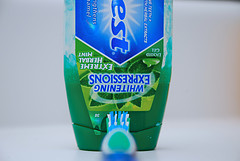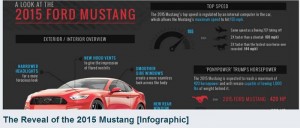 In a growing trend, Procter & Gamble is turning to consumers to help create a tagline for its new Crest Whitening Expressions toothpaste flavor through a contest on YouTube and supported by a print and television campaign filmed in American Idol-style with Emeril Lagassi as one of the judges. The campaign was created in part by Saatchi & Saatchi New York (TV) and Digitas New York (online).
In a growing trend, Procter & Gamble is turning to consumers to help create a tagline for its new Crest Whitening Expressions toothpaste flavor through a contest on YouTube and supported by a print and television campaign filmed in American Idol-style with Emeril Lagassi as one of the judges. The campaign was created in part by Saatchi & Saatchi New York (TV) and Digitas New York (online).
In an article in Brandweek, Blake Cahill, senior vice president of sales and marketing at Visible Technologies Seattle was quoted as saying that the campaign is an example of how brands are relying more and more on consumers to provide creative content as ideas from consumers prove to be, “many times more creative than what their own agencies deliver.”Whether or not that’s true, I’m not sure, but asking consumers to participate in the creative process is a great way to create an online buzz and increase the relationship consumers have with a brand. Relationship branding leads to customer loyalty, and an online buzz leads to word-of-mouth marketing, often from loyal brand influencers. WIth that in mind, including consumers in the creative process seems like a win-win situation for brands and consumers.
On the other hand, could ad agencies be writing themselves out of the picture by suggesting these types of interactive campaigns? Instead of masterminding the creative behind brands, ad agencies are finding themselves in a different role creating individual promotions rather than broader branding campaigns.
It’s an interesting shift in the way advertising is done, and a great example of how brands like Crest are leveraging the social web and relationship branding to drive awareness and interest in new product launches and their overall brands. What do you think of this trend in seeking out consumer input?
It’s like the branding and advertising version of pull marketing vs. push marketing. Rather than pushing advertising and branding messages to consumers, brands are engaging consumers and pulling messages from them, making them feel like they’re in control. It certainly seems to be working.
Image: Flickr
Lucy is Editor at Corporate Eye


